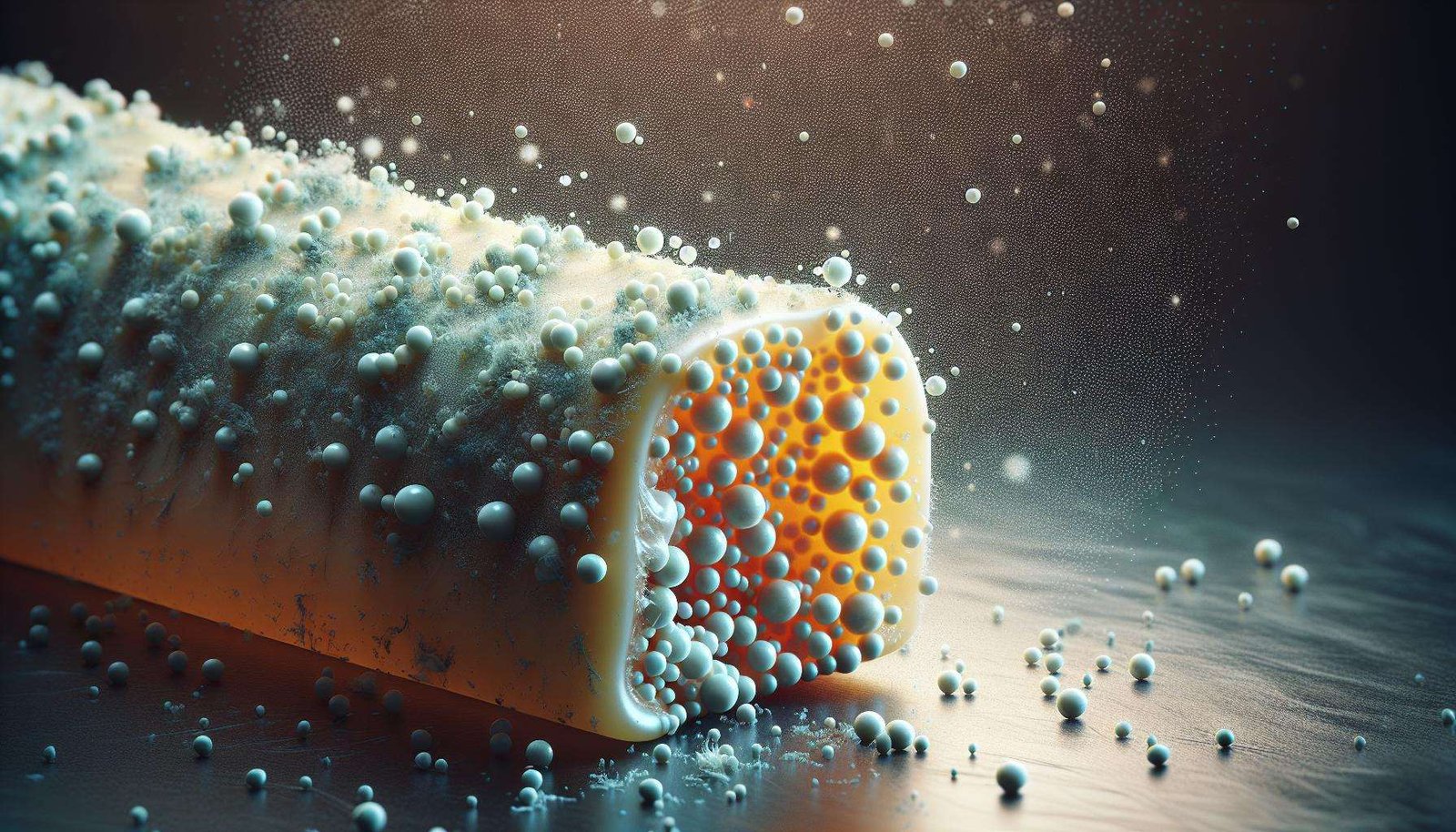
As I read over and over again about the ubiquity of microplastics and that they are now found in testicular and brain samples (which are meant to be particularly well insulated due to the barriers in place) – I keep asking myself what I am doing to increase (or decrease) my consumption of these plastics that leach their chemicals into our bodies. As an ex-Oncologist I also can’t help but wonder if this is – if not the main cause – a significant cause of the increased rates of colorectal, breast pancreatic and other cancers.
A recent pilot study has unveiled an unexpected source of microplastic pollution: chewing gum. While many of us chew gum for its flavor or stress-relieving properties, we are unwittingly introducing tiny plastic particles into our mouths. This new discovery sheds light on the broader implications of microplastic pollution, a pressing environmental issue due to its impact on health and ecosystems.
Understanding Microplastics
Microplastics are tiny plastic particles, generally less than 5 millimeters in size, that result from the breakdown of larger plastic items. They are omnipresent in our environment, found everywhere from the deepest oceans to the air we breathe. The challenge with microplastics is that they’re not just one thing; they include a variety of materials used in different products, and they can have harmful effects on both wildlife and human health.
When plastics, including microplastics, enter the human body, they can pose a range of health risks. One concern is that they may act as carriers for harmful pollutants, introducing toxins that can accumulate in body tissues. The potential for these particles to disrupt hormones or cause inflammation is also a topic of growing research.
The Hidden Microplastics in Chewing Gum
The study examining chewing gum adds a surprising twist to our understanding of microplastic sources. It was discovered that gum base, the ingredient providing chewiness in gum, often contains synthetic plastics. As individuals chew gum, they unknowingly release these particles into their saliva. This revelation may change how we think about everyday habits and their implications on health and the environment. You can read more about the composition of gum and its environmental impacts in this Wikipedia article.
Researchers confirmed their findings by analyzing saliva samples from volunteers who had consumed gum from different brands. The results were unanimous: all samples contained microplastics, raising questions about potential health impacts and environmental contributions. These findings suggest that every piece of gum chewed can add to the global issue of microplastic pollution.
Environmental and Health Consequences
The presence of microplastics in saliva may seem trivial initially, but its implications are far-reaching. Besides potential health concerns, there is the environmental angle. When gum is improperly disposed of, the lingering microplastics can contribute to pollution. Additionally, when gum is spit out or improperly disposed of, the microplastics it contains can enter waterways or soil, further dispersing these pollutants across ecosystems.
On a larger scale, this contributes to a seemingly insurmountable problem. Scientists estimate that the world’s oceans contain over 14 million tonnes of microplastics according to research published in Nature. This problem is only projected to grow unless humans take proactive action.
Shifting Towards Sustainable Solutions
Companies and environmentalists are keenly aware of the issue, driving innovations in product development towards less harmful alternatives. Some companies have begun exploring the potential of natural gums that decompose easily, offering a more sustainable approach. For instance, gum bases derived from natural resins do not rely on synthetic plastics. These alternatives pose no risk of releasing microplastics into the environment, making them a promising track for sustainable product innovation.
For consumers looking to make eco-friendly choices, selecting biodegradable gum options is a straightforward change that can make a big difference. Understanding which brands align with environmental values is critical, and verifying packaging claims through reliable sources is always a recommended practice. For further reading on renewable and biodegradable materials, the Wikipedia page on biodegradable plastics offers a comprehensive overview.
Scientific and Technological Advances
In recent years, scientific advancements have offered new possibilities for addressing microplastic pollution. Researchers are continually exploring novel materials and recycling technologies that can reduce the prevalence of plastics in everyday products. This includes innovations in creating biodegradable polymers and advances in microplastic detection methods that trace their presence in environments more efficiently and accurately.
For instance, the development of more sensitive detection technologies enables scientists to identify plastic particles in challenging environments like marine sediments or artifical waterways. This knowledge enables informed decisions to address pollution sources effectively.
Taking Responsibility: What We Can Do
While research and developments continue, every individual can take small steps to mitigate microplastic impact. Chewing sustainably sourced gum is a manageable shift, but it is also pivotal to participate in broader initiatives like community clean-ups and recycling programs. By raising awareness and advocating for stricter regulations on plastic production and disposal, we can create systemic change.
Furthermore, staying informed through platforms like Green.org can help us make environmentally conscious decisions. Being mindful of product compositions, supporting sustainable brands, and urging for transparent labeling increase the accountability of producers to align with greener practices. Understanding the composition and production practices of consumer goods is an empowering step towards change.
Conclusion
What seems like a small finding in a singular study has unveiled notable insights into the broader implications of everyday consumables on our environment. Addressing the microplastic issue stemming from chewing gum may serve as a microcosm for addressing various other everyday habits contributing to pollution.
While today’s conclusions around chewing gum and microplastics shed light on a previously overlooked source of contamination, hopeful advancements towards sustainable alternatives offer promise. As both researchers and consumers, our collective efforts can steer the trajectory toward a healthier, more sustainable future. The power rests in each choice—we can chew with consciousness.
The post Chewing Gum as a Source of Microplastics: New Findings and Implications appeared first on Green.org.














